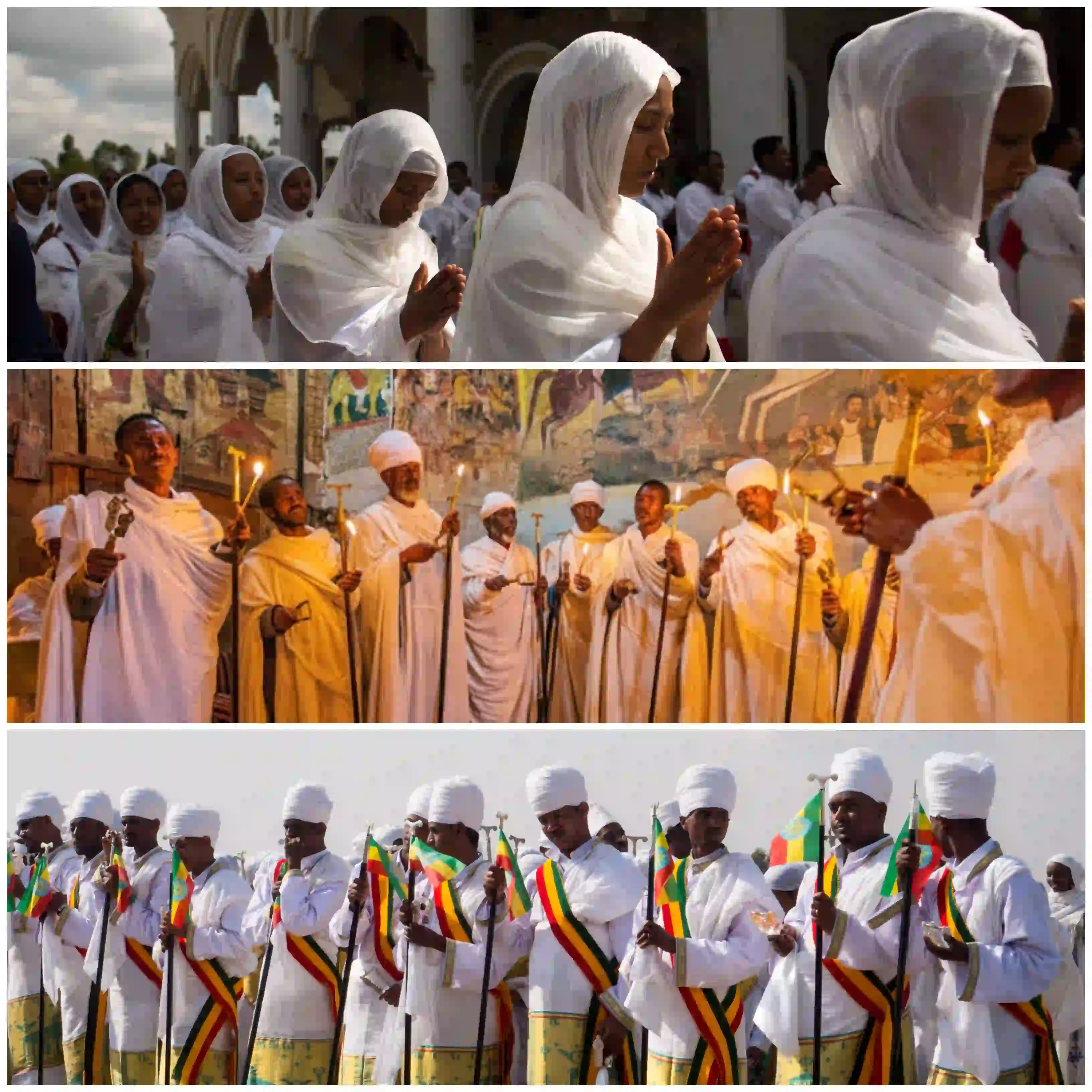Revealing What You Need to Know about Danakil Depression
The Danakil Depression, located in the northern part of the Afar Region in Ethiopia, is a geological marvel situated at the triple junction of three tectonic plates. This vast depression, measuring approximately 200 by 50 kilometers, has been shaped by the divergence of Africa and Asia, resulting in rifting, volcanic activity, and the formation of unique geological features. Basalt lava flows overlay sedimentary rocks such as sandstone and limestone, contributing to its striking landscape.

With its extreme arid conditions and year-round scorching temperatures, the Danakil Depression is not only the hottest place on Earth but also one of the lowest, lying 125 meters below sea level. This extraordinary location has earned its place as an IUGS Geological Heritage Site, showcasing the ongoing birth of an ocean through tectonics and volcanism. The Danakil Depression is a geological marvel located in the northern part of the Afar Triangle in Ethiopia. This extraordinary destination, formed by the divergence of three tectonic plates, offers a unique combination of geological wonders and cultural significance. In this article, we will delve into the geological features, cultural importance, and travel tips for exploring the Danakil Depression.
Related: - Top 16 of the most beautiful places to visit in Ethiopia
Geological Marvels
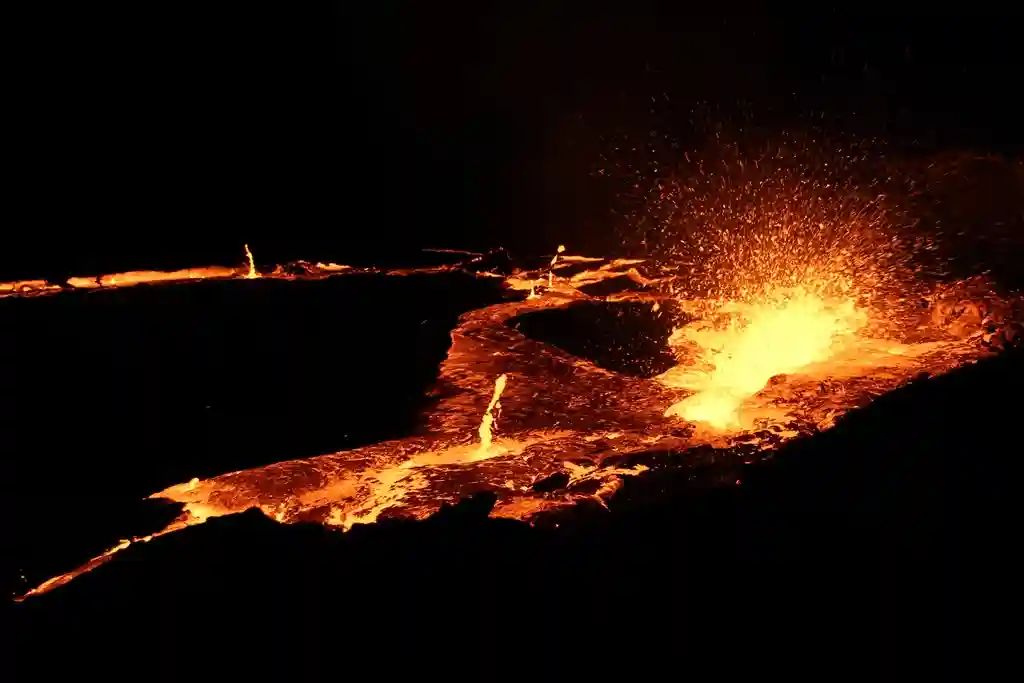
The Danakil Depression, situated at the triple junction of tectonic plates, boasts a fascinating array of geological marvels that are sure to captivate any visitor. This region's complex geological history, shaped by the separation of Africa and Asia, has resulted in a truly extraordinary landscape. One of the most striking features of the Danakil Depression is its volcanic activity. The Erta Ale volcano is a prominent attraction. With its persistent lava lake, Erta Ale is one of the few volcanoes in the world where molten lava can be observed continuously.
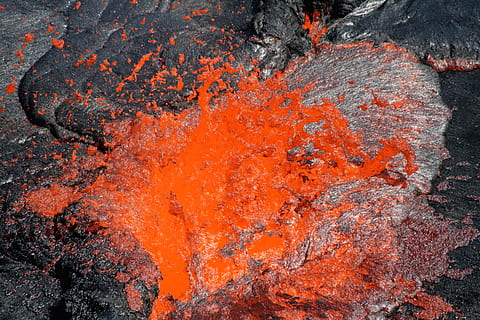
The sight of the glowing lava against the dark night sky is a mesmerizing experience that leaves visitors in awe of nature's power. In addition to Erta Ale, the Danakil Depression is home to the Dallol hydrothermal field. This unique geological formation is characterized by colorful hot springs, acidic pools, and chimneys emitting steam and gas. The vibrant hues of red, yellow, and green created by the interaction of minerals and gases present a surreal and alien-like landscape.
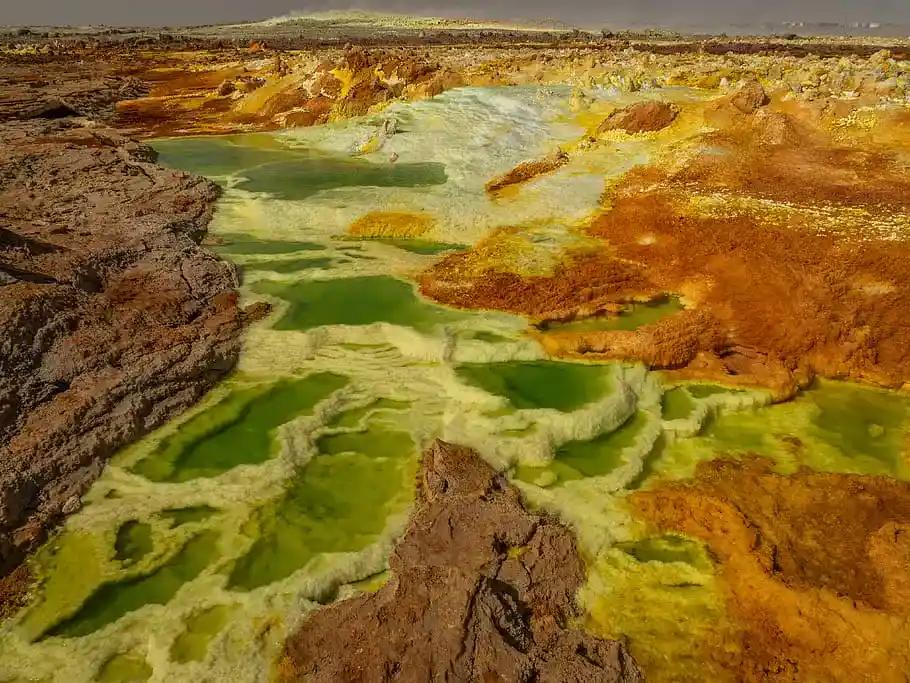
It feels as if you've stepped onto another planet as you wander through this otherworldly terrain. Another remarkable aspect of the Danakil Depression is its salt formations. The area is dotted with expansive salt flats and salt mountains, creating a striking contrast against the arid desert surroundings. The salt flats, such as the vast expanse of Lake Afrera, shimmer with a pristine white surface that stretches as far as the eye can see.
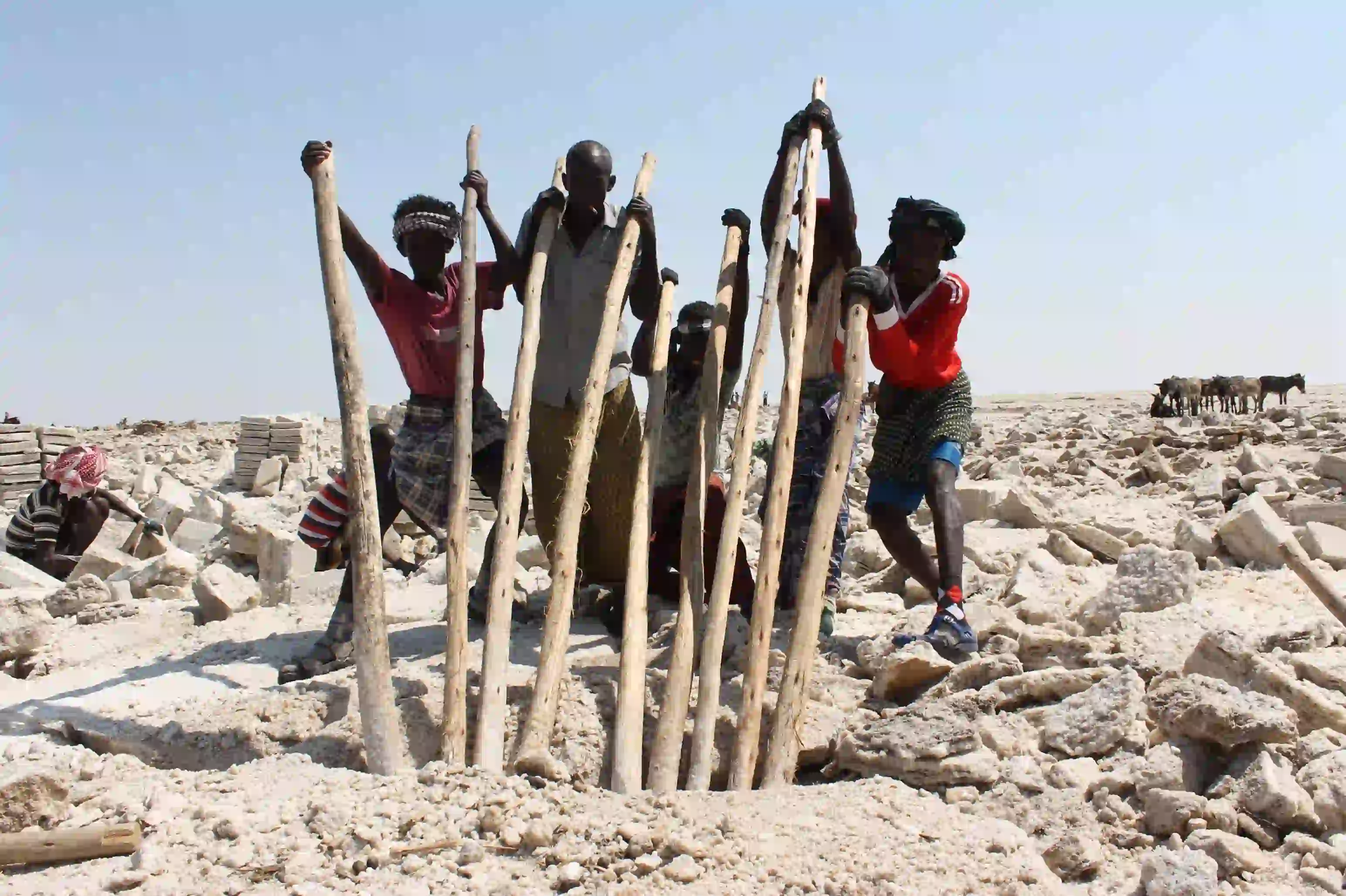
These salt formations have been shaped by the evaporation of ancient seas and the accumulation of salt sediments over millions of years. The geological wonders of the Danakil Depression are not only visually captivating but also scientifically significant. In recognition of its international scientific relevance, the International Union of Geological Sciences (IUGS) included the Danakil Rift depression and its volcanism in its assemblage of 100 geological heritage sites worldwide in October 2022. This acknowledgment highlights the ongoing birth of an ocean witnessed through tectonics and volcanism in this extremely evaporite arid environment. Exploring these geological marvels is a truly transformative experience. As you stand at the edge of the lava lake or walk amidst the vibrant colors of the hydrothermal field, you can't help but feel a deep connection to the Earth's powerful forces and the ever-changing nature of our planet. Immersed in the Danakil Depression's geological wonders, you'll gain a profound appreciation for the Earth's intricate processes and the immense beauty that can arise from its tumultuous history. It is a place where science and awe-inspiring beauty converge, leaving an indelible mark on all who venture into this geological wonderland.
Cultural Significance

The Danakil Depression holds great historical and cultural importance, particularly to the local Afar people, who have inhabited this region for generations. The Afar people, known for their resilience and adaptability, have developed a unique way of life in this harsh environment. The nomadic lifestyle of the Afar people is intricately connected to the land. They have learned to navigate the challenging conditions of the Danakil Depression, relying on their deep understanding of the environment and its resources.
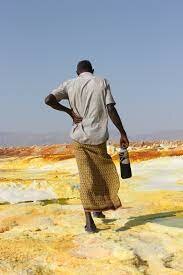
Herding livestock, particularly camels, has been a central part of their livelihoods. These animals are well-suited to the arid climate and serve as vital companions and transportation in this harsh landscape. Salt mining is another significant aspect of the Afar culture in the Danakil Depression. The region is known for its vast salt flats and mountains, which have been sources of salt for centuries. The Afar people engage in traditional salt extraction methods, using traditional tools and techniques to harvest the salt.

The salt is then transported by camel caravans across the unforgiving terrain, connecting the Danakil Depression to other regions of Ethiopia. The cultural heritage of the Afar people is deeply intertwined with their surroundings. They have passed down traditions, stories, and oral histories that offer insights into their way of life and the challenges they face. Their resilience in the face of adversity is remarkable, and their ability to thrive in the harsh conditions of the Danakil Depression is a testament to their strength and adaptability. Furthermore, the Danakil Depression has been a site of significant archaeological discoveries. In 1974, the renowned paleoanthropologist Donald Johanson and his colleagues discovered the fossilized remains of Australopithecus afarensis, famously named Lucy.
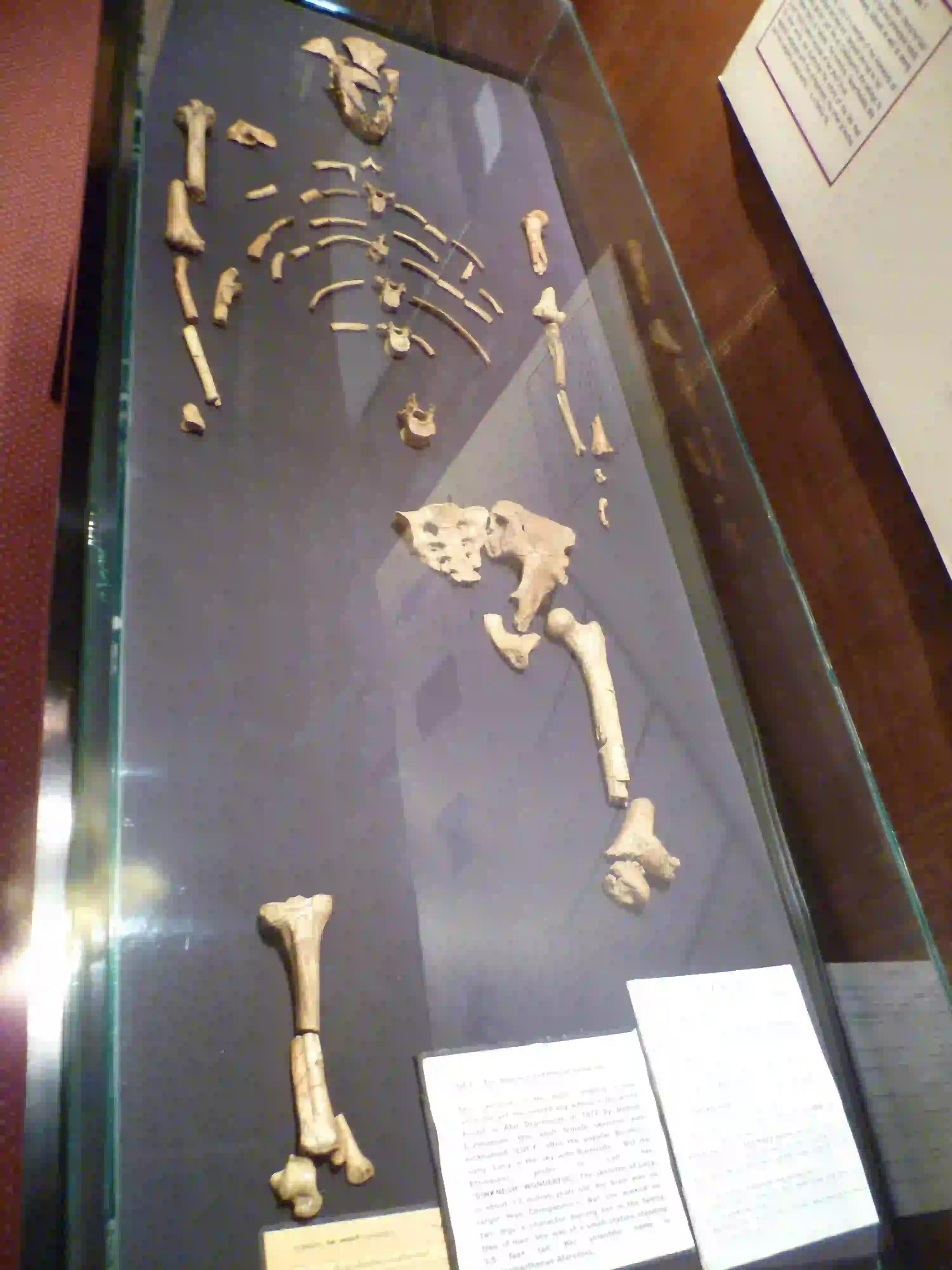
This discovery revolutionized our understanding of human evolution, as Lucy provided crucial insights into our early ancestors. Since then, numerous other fossils of ancient hominins have been uncovered in the region, reinforcing the belief that the Danakil Depression is where the human species first evolved. The cultural significance of the Danakil Depression extends beyond the Afar people. Archaeological excavations have revealed ancient ruins and artifacts, shedding light on the historical civilizations that once thrived in this area. These archaeological sites offer glimpses into past cultures, trade routes, and the interactions that shaped the region's history. Visiting the Danakil Depression provides an opportunity to immerse oneself in the rich cultural heritage of the Afar people. Interacting with local communities, learning about their traditions, and witnessing their way of life can be a transformative experience.
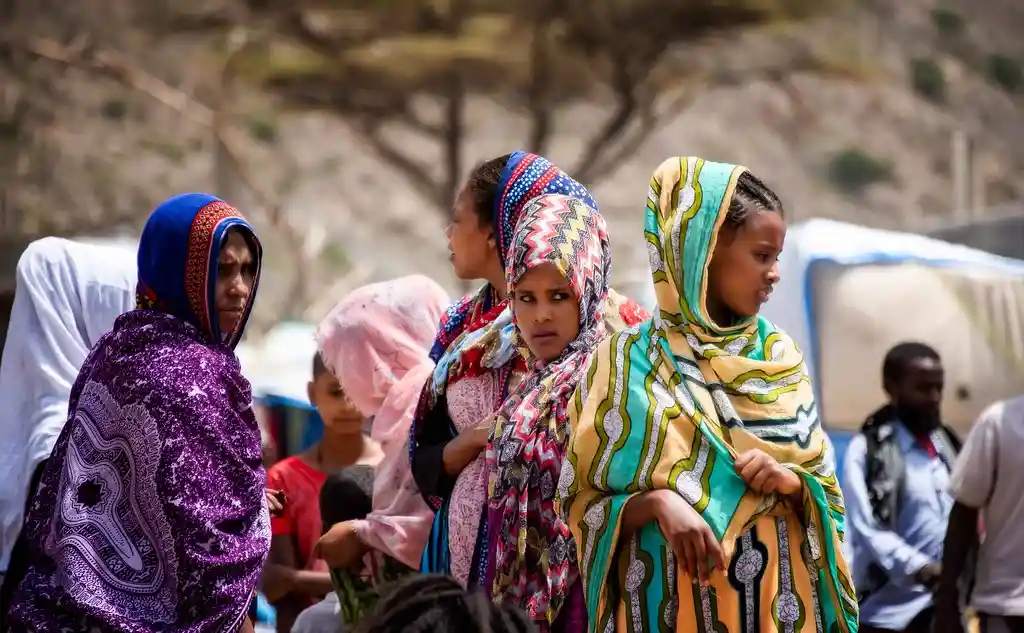
It offers a chance to appreciate the resilience, resourcefulness, and deep connection to the land that defines the Afar people and their cultural identity.
Planning Your Journey to the Danakil Depression
Planning a trip to the Danakil Depression requires careful consideration and preparation to ensure a safe and fulfilling experience. Here are some essential factors to keep in mind:
- Choosing the Right Time to Visit
- Obtaining Permits and Hiring Guides
- Choosing a Tour Operator
- Packing Essentials
- Lightweight, breathable clothing:
- Sun protection:
- Footwear:
- Hydration supplies:
- First aid kit:
- Personal care items:
- Flashlight and batteries:
- Health Precautions
- Consult a travel healthcare professional or your doctor before the trip to discuss necessary vaccinations and medications.
- Carry insect repellent to protect against mosquitoes and other insects.
- Follow proper food and water hygiene practices. Stick to bottled water and avoid consuming raw or unhygienically prepared food.
- Protect yourself from the sun by applying sunscreen regularly, wearing protective clothing, and staying in shaded areas when possible.
- Be mindful of the extreme heat and take regular breaks in shaded or cool areas to prevent heat exhaustion or heatstroke.
- Respect the local customs and traditions, including dress codes and cultural sensitivities.
The Danakil Depression is known for its extreme temperatures, making it crucial to select the optimal time for your visit. The region experiences scorching heat year-round, with average temperatures often exceeding 40°C (104°F). However, the cooler months between November and February offer more moderate temperatures, making it a popular time for travelers. Be aware that even during these months, daytime temperatures can still be high, so adequate sun protection and hydration are essential.
To visit the Danakil Depression, you will need permits from the Ethiopian authorities. These permits are usually obtained through licensed tour operators who specialize in organizing trips to the region. Working with a reputable tour operator is highly recommended as they can handle the logistics, provide experienced guides, and ensure compliance with local regulations. Local guides are invaluable sources of knowledge about the area's geology, culture, and safety precautions.
When selecting a tour operator for your Danakil Depression adventure, consider their reputation, experience, and commitment to safety. Look for operators who have a good track record, positive reviews from previous travelers, and a focus on sustainable tourism practices. They should have well-maintained vehicles, reliable communication systems, and trained staff who prioritize the well-being of their guests. Research different operators, compare itineraries and prices, and ask for recommendations from fellow travelers or online travel communities.
Packing the right gear and essentials is crucial for a comfortable and safe journey in the Danakil Depression. Here are some items to consider:
Opt for loose-fitting, light-colored clothing that provides sun protection while allowing air circulation.
Pack a wide-brimmed hat, sunglasses, and sunscreen with a high SPF to shield yourself from the intense sun.
Choose sturdy, comfortable shoes suitable for walking on uneven terrain. Closed-toe footwear is recommended for protection.
Carry plenty of water bottles or a hydration bladder to stay hydrated in the arid conditions. Electrolyte solutions can help replenish lost minerals.
Include essentials like bandages, antiseptic ointment, pain relievers, and any necessary prescription medications.
Bring toiletries, wet wipes, and hand sanitizer for maintaining hygiene in remote areas.
A reliable flashlight is essential for navigating the area after dark.
When traveling to the Danakil Depression, it's essential to prioritize your health and well-being. Consider the following precautions:
By carefully planning and preparing for your journey to the Danakil Depression, you can ensure a safe and enriching experience in this remarkable destination. Remember to be flexible, embrace the challenges, and immerse yourself in the incredible beauty and cultural significance of the region.
Share This Article

















